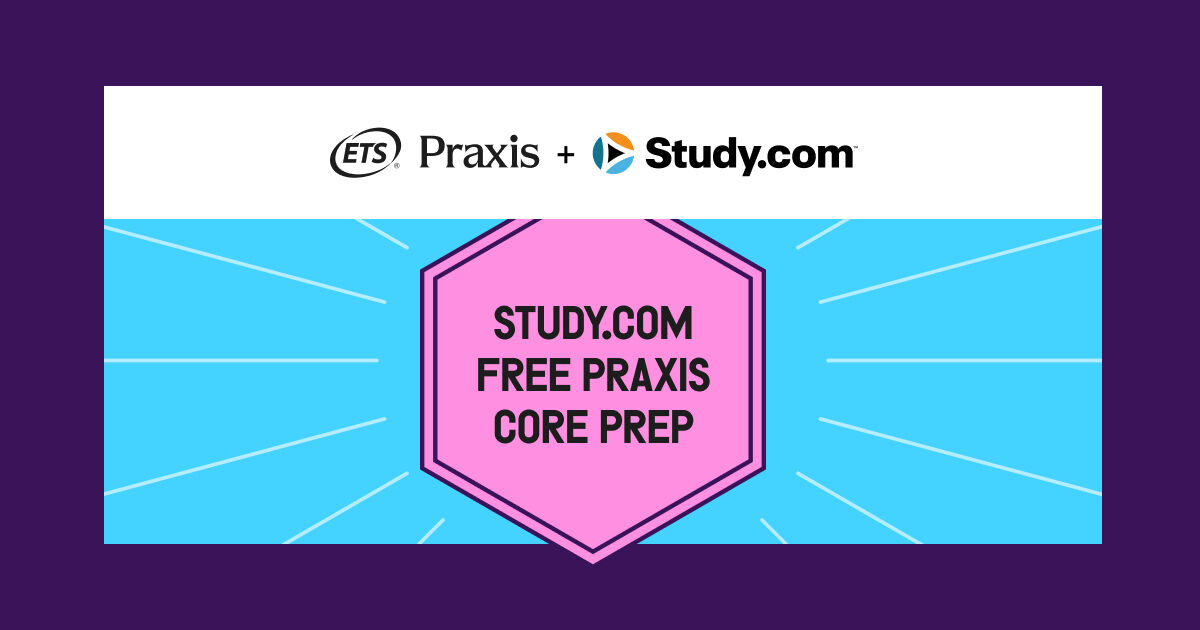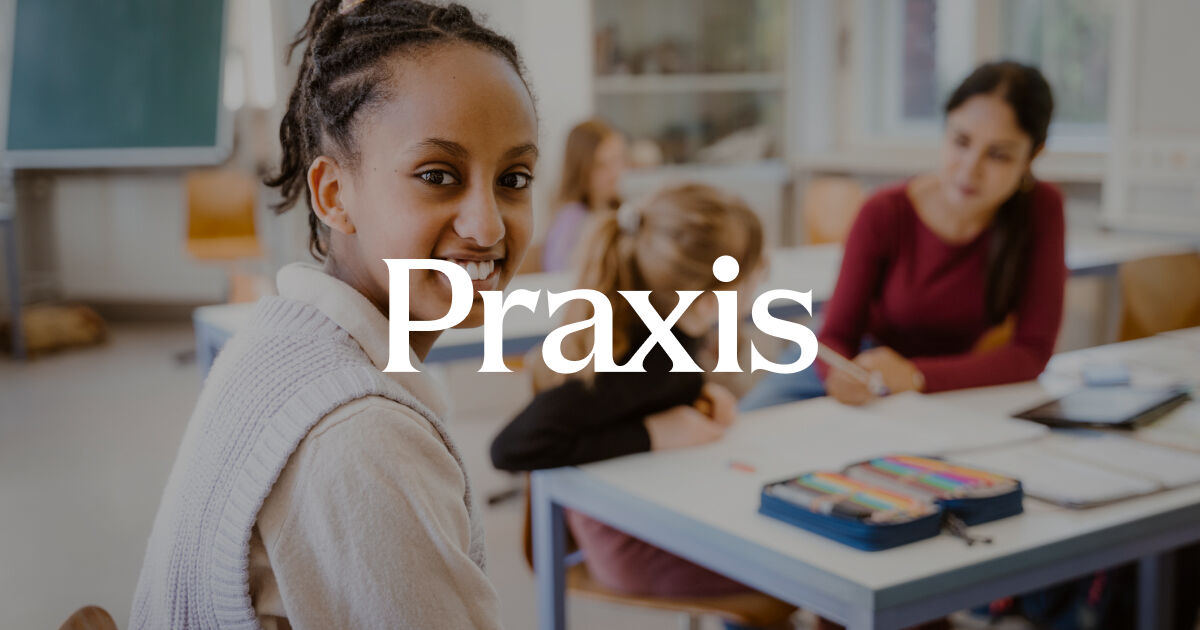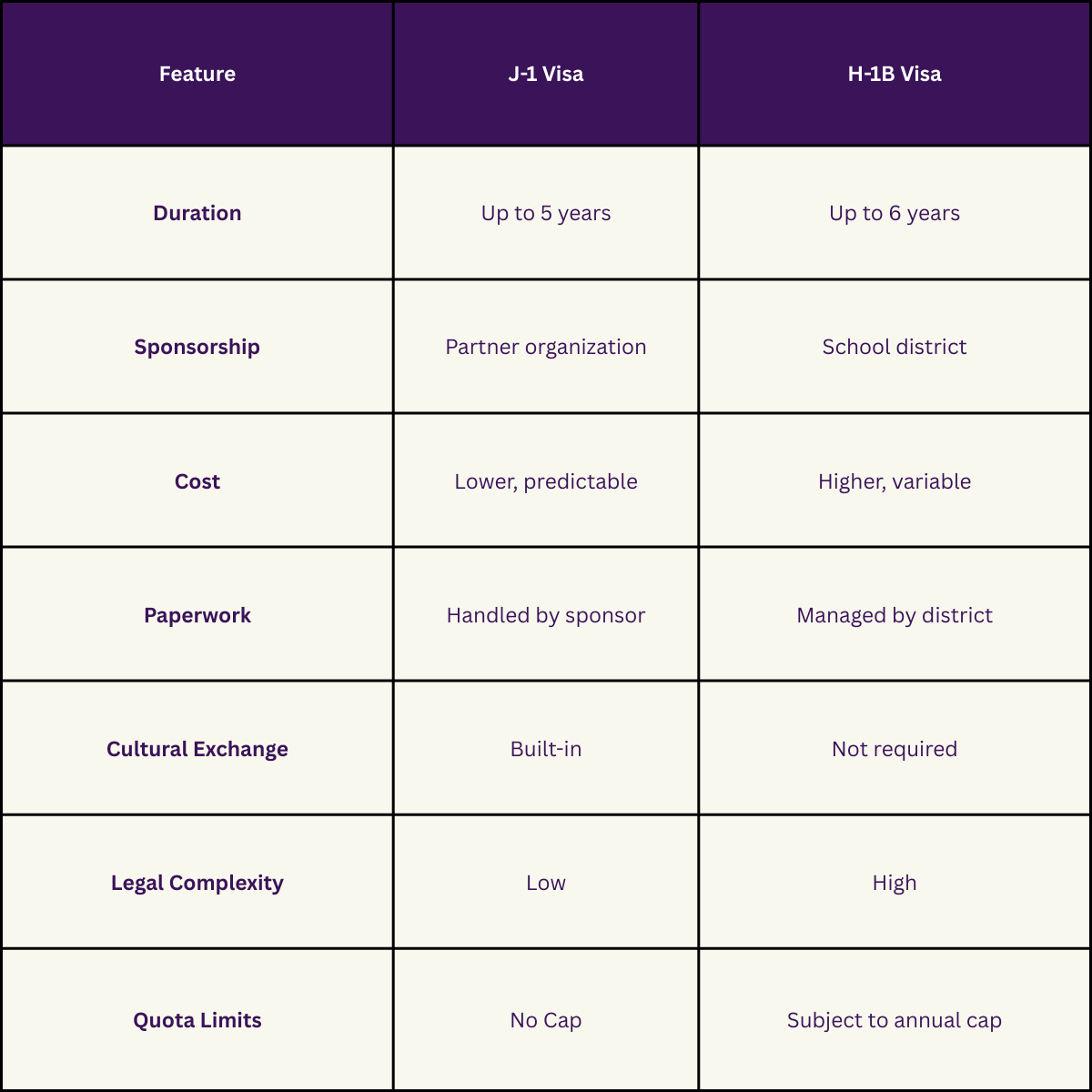
J-1 vs. H-1B Visas: What School Districts Need to Know
As school districts across the U.S. face ongoing teacher shortages, many are exploring international recruitment to fill critical roles. Two of the most common visa pathways for hiring international educators are the J-1 Exchange Visitor Visa and the H-1B Specialty Occupation Visa. While both can bring talented teachers into your classrooms, they differ significantly in structure, cost, and district responsibilities.
Here’s a breakdown to help district leaders make informed decisions.
What Is a J-1 Visa?
The J-1 visa is part of the U.S. Exchange Visitor Program, designed to promote cultural exchange. For teachers, it allows them to work in U.S. schools for a limited time while sharing their home culture and learning about American education.
Key Features:
- Duration: Up to 3 years, with a possible 2-year extension.
- Purpose: Cultural exchange and professional development.
- Sponsorship: Managed through approved partner organizations (like ETS Praxis).
- Support: Includes cultural orientation, mentorship, and community integration.
District Responsibilities:
- Minimal paperwork—most handled by the sponsoring organization.
- Provide a welcoming school environment and basic onboarding.
- Collaborate with the sponsor on teacher support and evaluations.
Cost Considerations:
- Generally, more cost-effective.
- Lower legal and administrative overhead.
- Predictable program fees through the sponsor.
What Is an H-1B Visa?
The H-1B visa is a work visa for specialty occupations requiring a bachelor’s degree or higher. It allows districts to hire international teachers directly, but the process is more complex and resource-intensive.
Key Features:
- Duration: Initial 3 years, extendable to 6 years.
- Purpose: Employment in a specialized field.
- Sponsorship: The school district acts as the sponsor.
- Quota: Subject to an annual cap and lottery system.
District Responsibilities:
- Handle all legal, immigration, and compliance paperwork.
- Cover legal fees and filing costs.
- Manage the entire recruitment and onboarding process.
Cost Considerations:
- Higher legal and administrative costs.
- Greater risk of delays or denials due to the lottery system.
- Requires significant internal capacity and legal support.
Which One Is Right for Your District?
While both the J-1 and H-1B visas offer pathways to bring international talent into your classrooms, the J-1 visa stands out as the most accessible, cost-effective, and supportive option, especially for districts new to global hiring.
With built-in cultural exchange programming, streamlined processing through experienced partner organizations, and significantly reduced administrative burden, the J-1 visa allows districts to focus on what matters most: supporting great teachers and student success.
For districts looking to launch or scale international recruitment with confidence, the J-1 visa—particularly through a trusted partner like ETS Praxis—offers a proven, sustainable path forward.
Final Thoughts
International teacher recruitment can be a powerful solution to staffing challenges, but choosing the right visa pathway is critical. By understanding the differences between J-1 and H-1B visas, district leaders can make strategic decisions that align with their goals, resources, and community needs.
J-1 vs. H-1B: A Quick Comparison

By The Praxis Editorial Team
Using the Tomorrow’s Teacher blog, the writers, thought leaders, and researchers who comprise the Praxis Editorial Team focus on the pedagogical issues that matter most to educators. The goal: to create and sustain a constant dialogue, and to unite the interests of all those who value teaching and learning.
More Posts

How International Teachers Are Helping Students Thrive

By Praxis Editorial Team
Published on May 30, 2025

ProEthica: Promoting Ethical Education and Teaching Excellence

By Praxis Editorial Team
Published on October 8, 2024

Fostering Teaching Excellence: A Cornerstone of Educational Success

By Praxis Editorial Team
Published on September 24, 2024

Unlocking Student Potential: How SEL Fosters Success

By Praxis Editorial Team
Published on August 27, 2024

Strategies for Student Engagement and Classroom Practice

By Praxis Editorial Team
Published on August 13, 2024
.jpg)
Top AI Tools That Benefit Teaching and Learning

By Praxis Editorial Team
Published on July 30, 2024

Mastering Teacher Skills Through Performance Tasks

By Praxis Editorial Team
Published on July 16, 2024

Embracing Technology as a Learning Partner

By Praxis Editorial Team
Published on July 2, 2024

Becoming a Teacher: A Guide for Aspiring Educators

By Praxis Editorial Team
Published on June 18, 2024

Supercharging Pedagogy: The Power of AI in Education

By Praxis Editorial Team
Published on June 5, 2024

A Critical Resource: The Importance of Literacy Skills

By Praxis Editorial Team
Published on May 21, 2024

Social Emotional Learning: Vital for Teacher Preparation

By Praxis Editorial Team
Published on May 14, 2024

Overcoming Praxis Test Challenges: Retaking and Succeeding

By Praxis Editorial Team
Published on May 7, 2024
.jpg)
Future Directions: How Praxis and Study.com Consider Educator Preparation and Support

By Praxis Editorial Team
Published on April 30, 2024
.jpg)
Unveiling Educational Impact: ETS Praxis Ventures into New Research Horizons

By Praxis Editorial Team
Published on April 23, 2024

Achieving Success: Our Innovative Test Prep for Praxis Core

By Praxis Editorial Team
Published on April 15, 2024
.jpg)
Unlocking Diversity: ETS and Study.com Research Explores Keys to the Classroom

By Praxis Editorial Team
Published on April 9, 2024

Enhancing Literacy Learning: Blending Technology and Education

By Praxis Editorial Team
Published on April 2, 2024

Get Your Dream Job: Top 10 Interview Questions

By Praxis Editorial Team
Published on March 25, 2024

Making the Grade: Finding Your Ideal First Teaching Job

By Praxis Editorial Team
Published on February 27, 2024

Assessment Strategies I Wish I Knew When I Started Teaching

By Praxis Editorial Team
Published on March 12, 2024

Empowering New Teachers with Professional Development

By Praxis Editorial Team
Published on March 5, 2024

Supercharging Education with Formative Learning

By Praxis Editorial Team
Published on March 19, 2024

Meet Praxis: Where Education Leads the Conversation

By Praxis Editorial Team
Published on February 20, 2024

Breaking Boundaries: Praxis and Study.com Partner to Empower Educators

By Praxis Editorial Team
Published on February 20, 2024

Building the Future of Teaching: Essential Investments for New Educators

By The Study.com Editorial Team
Published on September 10, 2024




